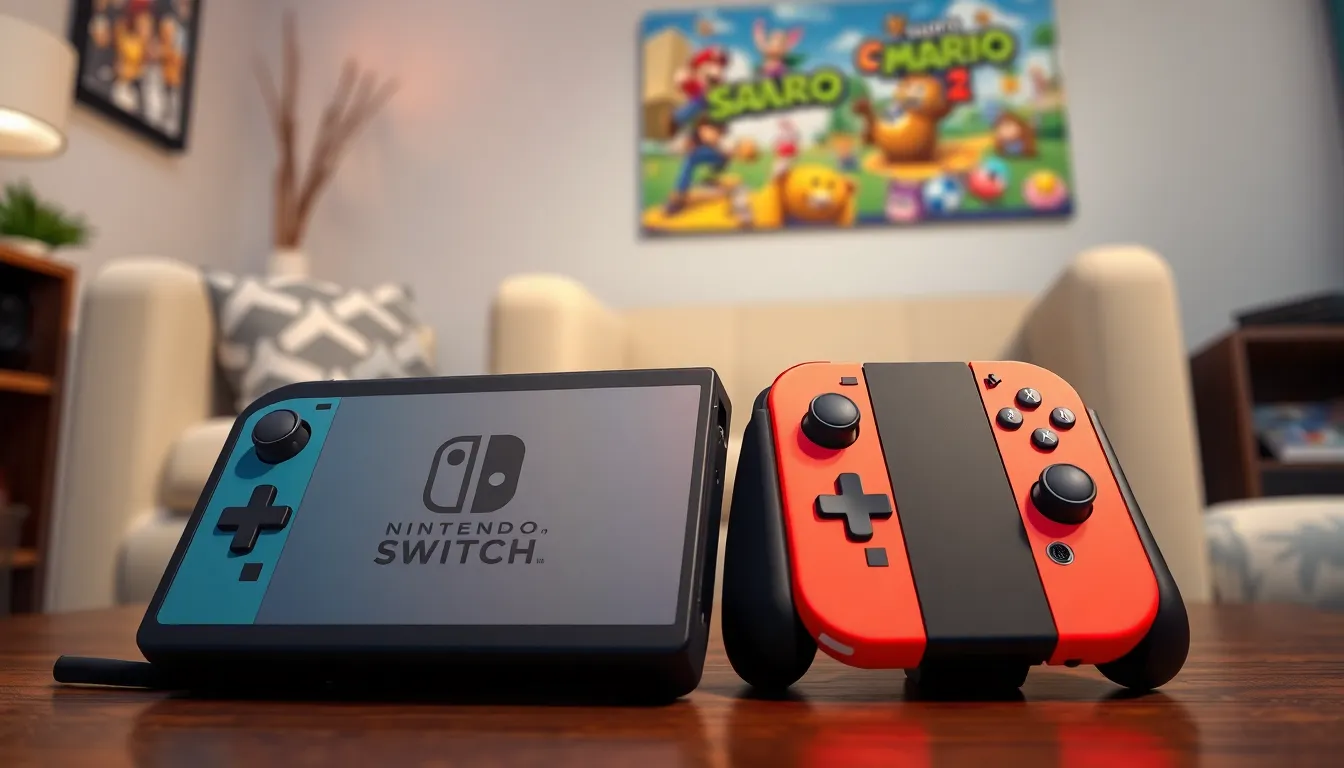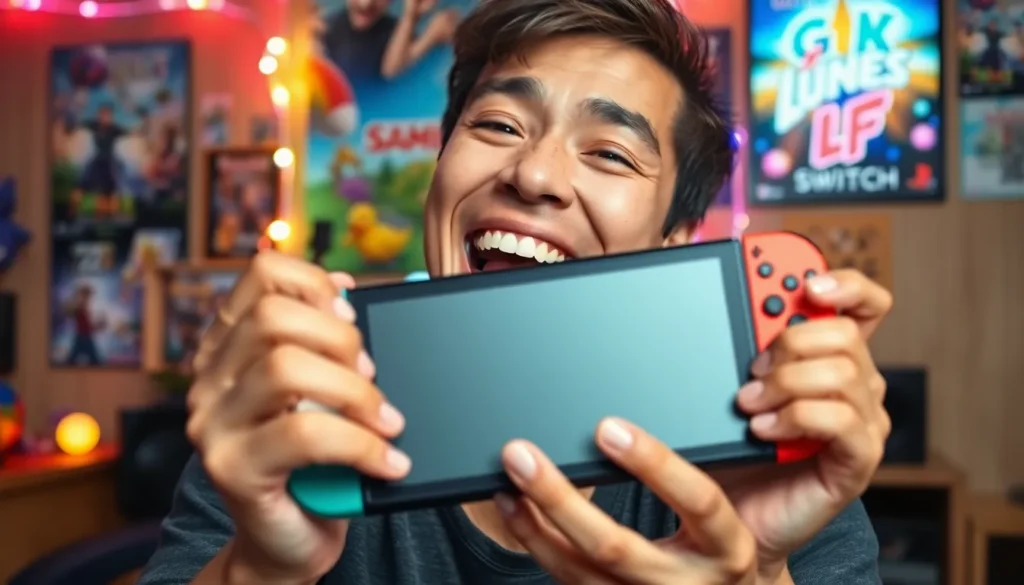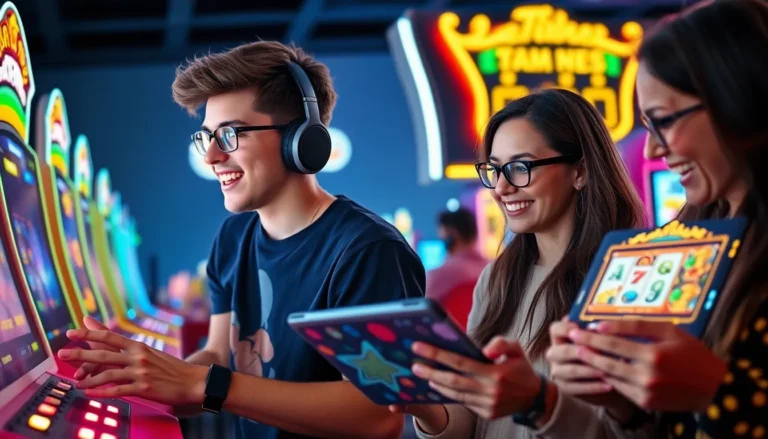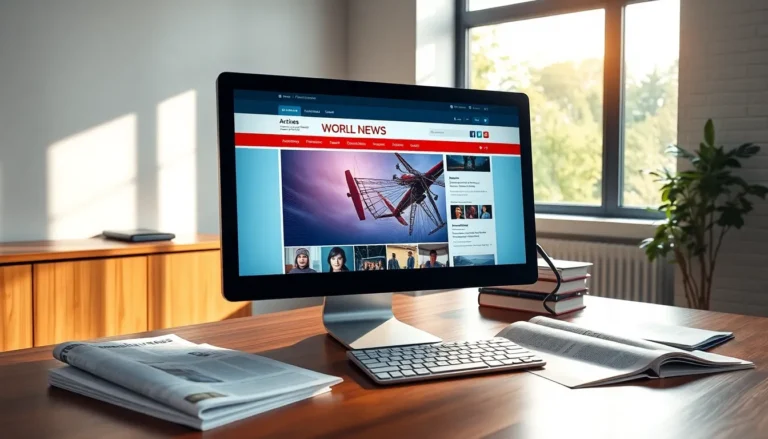Table of Contents
ToggleWhen it comes to gaming, nothing stirs up excitement quite like a new console. The Nintendo Switch 2 has gamers buzzing with anticipation, but a burning question lingers: can it play games from the original Switch? Picture this: you’ve invested hours in your favorite titles, and the thought of leaving them behind feels like a betrayal.
Overview of Switch Consoles
The Nintendo Switch is a hybrid gaming console known for its versatile play options. Players can use it in handheld mode, tabletop mode, or docked to a TV. The original Switch debuted in March 2017, quickly gaining popularity for its unique features and extensive game library.
The Switch Lite followed in September 2019, targeted at handheld gamers. Unlike the original, it doesn’t connect to a TV but offers portability for on-the-go play. In July 2021, the OLED model launched, enhancing the display experience with a vibrant screen. Improvements in audio and battery life also made it an attractive option for gamers.
Emphasis on compatibility shapes discussions around the potential Nintendo Switch 2. Gamers worry about their existing library of games if the new system lacks support for titles from the original Switch. The emotional attachment many players have to their favorite games underlines this concern.
Recent reports suggest that Nintendo aims for backward compatibility. By allowing access to previous games, players might seamlessly transition from the original to the next-generation console. This drive for continuity signals recognition of player investment in their gaming experiences.
Setting a precedent in gaming, the Switch ecosystem emphasizes flexibility and user engagement. Nintendo’s strategic focus on inclusivity positions it to address gamers’ needs effectively. Expect discussions about software compatibility and hardware advancements to dominate conversations leading up to the Switch 2’s launch.
Compatibility of Switch 2 and Switch 1

Gamers are eager to understand how the new Nintendo Switch 2 connects with the original Switch. Compatibility remains a crucial topic as players wish to retain their favorite titles.
Hardware Differences
Significant hardware advancements exist between the original Switch and Switch 2. Enhanced processing power allows the new console to run more demanding games. Improved graphics capabilities enable richer visuals and smoother gameplay experiences. Players may notice upgraded controllers that improve responsiveness and ergonomics. Notably, all these factors contribute to a better gaming experience while still supporting existing titles from the first console.
Software Considerations
Software compatibility is a priority for Nintendo. Reports suggest that Switch 2 aims for backward compatibility, ensuring players can access their previous game libraries. Most titles will run seamlessly due to system architecture similarities. Developers are optimizing popular games to enhance performance on the new console. As a result, players are likely to enjoy an uninterrupted transition between systems, safeguarding their investments in beloved games.
User Experience
Gamers anticipate a seamless transition from the original Switch to the upcoming Switch 2. Compatibility with existing titles enhances this expectation.
Performance Comparisons
Enhanced processing power in Switch 2 significantly improves gaming experiences. Many gamers notice smoother frame rates and quicker load times, thanks to upgraded hardware. Graphics capabilities also receive a substantial boost, offering richer visuals and more detailed environments. Nintendo’s focus on performance ensures games previously enjoyed maintain their enjoyment while benefiting from improvements in responsiveness. Developers optimize popular titles, leading to an overall superior performance across the board, which encourages players to explore their game libraries without hesitation.
Game Library Accessibility
Access to an extensive game library stands as a primary concern for Switch users. Nintendo’s commitment to backward compatibility plays a crucial role, allowing players to use existing favorite titles on the new console. This strategy not only reassures gamers but also fosters continuity within the ecosystem. Many reports indicate that most games run seamlessly on Switch 2 due to similar system architecture. Gamers can look forward to playing well-loved games without worrying about losing access. Enhanced performance optimizations for popular titles further enrich the gaming experience, maximizing enjoyment for loyal fans.
Potential Limitations
Backward compatibility remains a key topic among gamers. Some concerns arise regarding compatibility with certain original Switch titles. Not all games may support new hardware features, impacting performance and user experience. Instances of unoptimized games could lead to lag or reduced graphical capabilities.
Switch 2’s advanced architecture differs from its predecessor. Differences might hinder seamless playback of certain titles. Gamers worry that their favorite games won’t function correctly on the new system. Reports suggest most games will transition, but occasionally, unexpected limitations could emerge.
Performance enhancements could also introduce challenges. Older titles may not exhibit the same level of detail or fluidity as newer releases. Developers might prioritize optimization of current games over ensuring older titles run as intended.
Transitioning between consoles poses potential risks. Players might face issues transferring save data or maintaining progress in their favorite games. Managing digital libraries can also become more complicated, depending on how account systems evolve with the new console.
Hardware limitations of the original Switch may affect backward compatibility. Games designed with the original’s capabilities in mind may not leverage the full potential of Switch 2. Such discrepancies could lead to a less than optimal gaming experience.
Nintendo aims to address these concerns but recognizes challenges may persist. Communication between players and developers is vital to navigating potential issues. Regular updates and support could assist in smoothing the transition for gamers accustomed to the original Switch.
The anticipation surrounding the Nintendo Switch 2 continues to grow as gamers look forward to enhanced performance and seamless compatibility with their beloved titles. Nintendo’s commitment to backward compatibility reassures players that they won’t have to leave their favorite games behind.
While challenges may arise during the transition, the focus on optimizing existing games for the new hardware promises an enriched gaming experience. As the launch date approaches, it’s clear that the excitement isn’t just about new features but also about preserving the cherished game library that players have built over the years. With the right support and communication, the transition to the Switch 2 can be a smooth and enjoyable journey for all.




